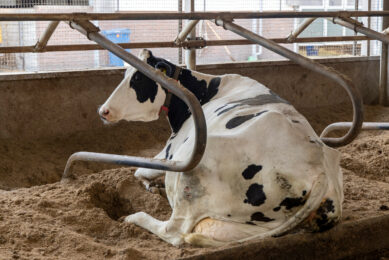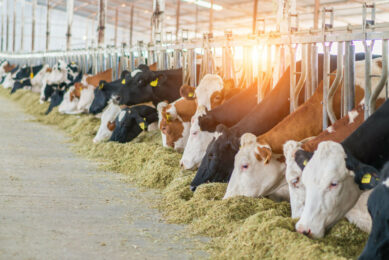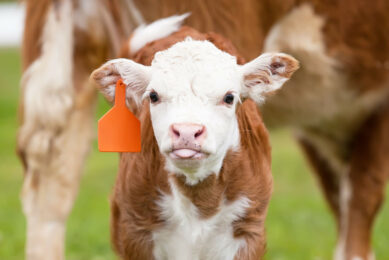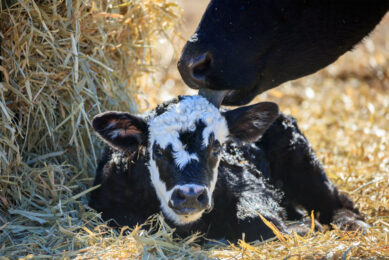Impact of lying and sleep deprivation on dairy cows
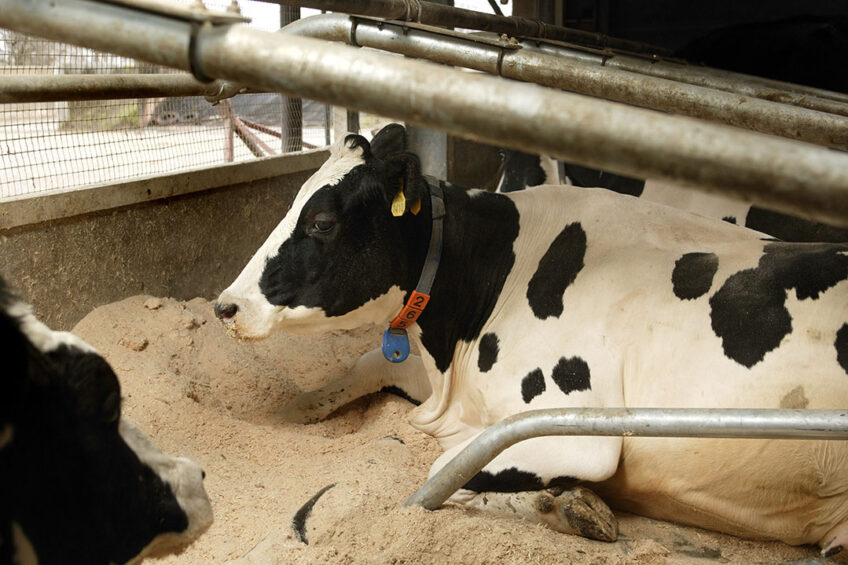
Research conducted at the University of Tennessee found the potential impact of lying and sleep deprivation on the health of dairy cows. This work was supported by the United States Department of Agriculture National Institute of Food and Agriculture.
Dairy cows that are restricted from lying down have a reduced ability to sleep, causing negative welfare implications. In other species, sleep loss is a key risk factor for disease, mediated by changes in metabolic and inflammatory responses. The effect of sleep and lying deprivation on the health of dairy cows has not been well established. Determining the effect of acute sleep and lying deprivation on physiological indicators of health in dairy cattle, including inflammatory and metabolic responses, is a critical first step in understanding the consequences of management strategies that may result in reduced lying time and sleep loss.
A cow’s time spent lying and sleeping
In general, the time budgets of dairy cows include time-consuming activities such as eating, lying and being milked, as well as time spent moving between these activities. It is possible that the sum of all these activities causes a conflict in the time budget, compromising the time for resting and sleeping.
Research shows that dairy cows lie down between 11 and 13 hours per day in confinement housing systems. A portion of lying time is spent sleeping. Sleep is divided into 2 main vigilant states: non-rapid eye movement (NREM) sleep and rapid eye movement (REM) sleep. However, drowsing in some animals is observed; this is described as an intermediate state between wakefulness and NREM sleep.
Dairy cows sleep for about 4 hours per day, in short 3-5 minute bouts throughout the day. Specifically, they spend 3 hours per day in NREM sleep, 30-45 minutes per day in REM sleep and 8 hours per day drowsing. Cows can also drowse and engage in some NREM sleep when forced to stand, though this is not normally observed. No sleep states can be achieved while standing; a recumbent position must be assumed for cows to engage in REM sleep. Therefore, any loss of lying time has the potential to alter the time cows spend sleeping.
The Tennessee study
The researchers aimed to determine the effect of 24-hour human disturbance or lying deprivation on metabolic (NEFA and glucose) and inflammatory responses (pro-inflammatory cytokines: tumour necrosis factor, or TNF, and interleukin, or IL1B and IL6.
A total of 12 gestating, mid to late lactation Holstein dairy cows were used in this study, which included 2 treatments that aimed to induce sleep loss through human disturbance and lying deprivation. To deprive cows of lying, a wooden grid was placed on the pen floor, preventing cows from assuming a recumbent position. The data collected from the electroencephalography (EEG) attached to each cow was used to determine the different phases of sleep – NREM, REM and drowsing – experienced during the baseline and treatment periods.
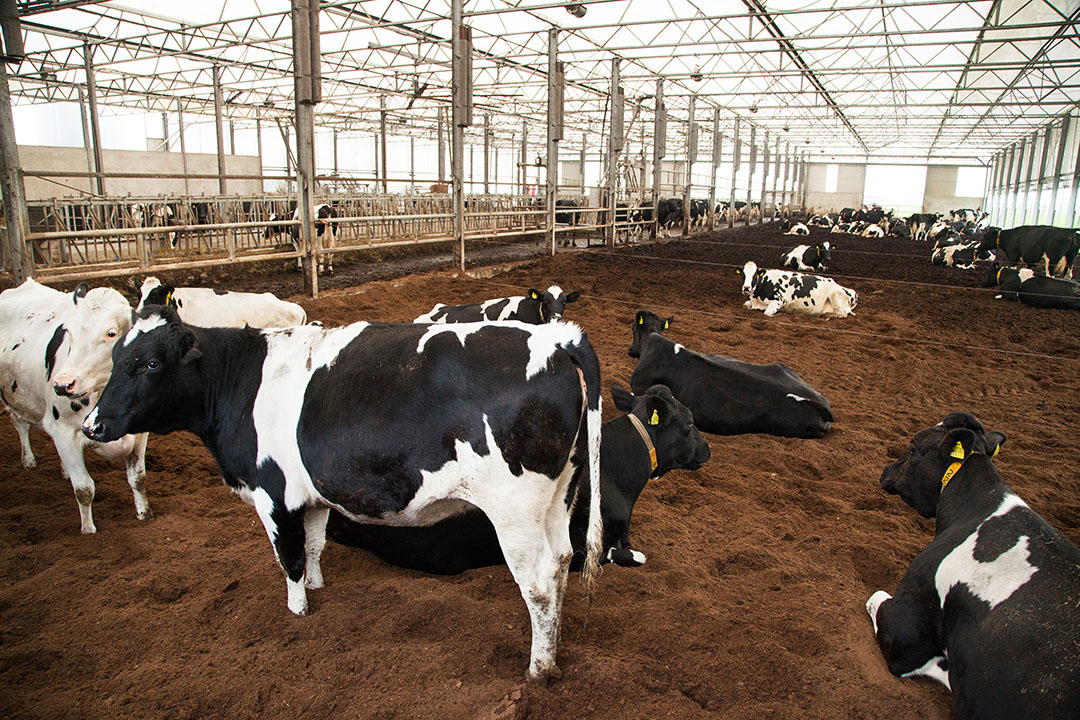
Metabolic and inflammatory responses
The researchers had originally predicted that cows in both treatments would show shifts in energy balance and inflammatory responses compared with baseline measurements. However, they found that neither treatment affects metabolic indicators (NEFA and glucose), but lying deprivation stimulates the expression of inflammatory cytokines. The abundances of TNF and IL1B were higher following 24 hours of lying deprivation compared with baseline. In contrast, human disturbance for 24 hours did not alter either TNF, IL1B or IL6 abundance relative to baseline levels.
The researchers remarked, “In our previous research where we investigated the effects of acute lying and sleep deprivation on the behaviour of lactating dairy cows, lying deprivation caused a significant reduction in all sleep states (REM, NREM, drowsing); however, human disturbance caused only minor differences from the baseline period, suggesting cows were able to maintain sleep despite our efforts to keep them awake using human disturbance. These findings may explain why in our current study we observed larger effects of lying deprivation on inflammatory markers compared with human disturbance.”
Lead researcher, associate Professor Katy Proudfoot, said, “These results suggest that a short period of lying deprivation increases inflammatory responses but not metabolic responses.”
The lack of effect on metabolic indicators was attributed to milk production and dry matter intake (DMI).
“It should also be noted that these cows experienced a 3 kg decrease in milk production on the day after the lying deprivation treatment, potentially allowing cows to maintain energy balance despite increased energy demands during sleep loss. In addition, we specifically selected cows that had a high tolerance to humans and perhaps a higher overall tolerance to a stressful environment. We were also unable to measure the effects of our treatments on DMI, which would help in our interpretation of the results for metabolic indicators,” she added.
Reduced milk yield
In their previous research, the researchers found that although sleep deprivation had no effect on milk production, the combination of sleep and lying deprivation reduced milk yield. In that same study, both lying and sleep deprivation showed higher milk fat content but no influence on milk protein. Lying deprivation had higher somatic cell count (SCC) compared to the baseline, but sleep deprivation had no effect on SCC.
The researchers emphasised the need for future research to measure the effects of sleep deprivation on more vulnerable populations, such as ill cows, post-parturient cows or those with more nervous dispositions.
In addition, the researchers were unable to determine whether the adaption towards a pro-inflammatory environment during lying deprivation was driven by sleep loss, greater standing time or a combination of both. They therefore recommended further research to establish the association between lying deprivation and sleep deprivation. They also suggested the inclusion of a systemic marker of inflammation collected throughout the day and night before and during recovery to help establish the extent to which systemic pro-inflammatory changes occur.
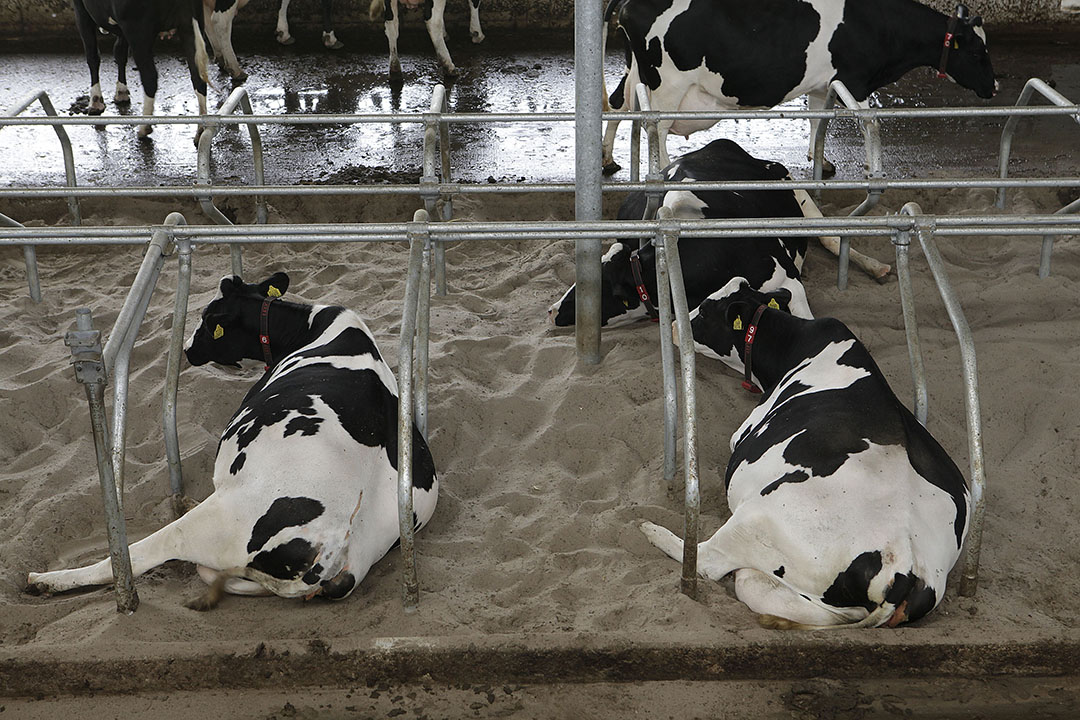
Lying behaviour and lameness
Lameness is widely recognised as a serious animal welfare and production issue in the dairy industry. Lameness compromises the welfare of the affected animals and can result in reduced milk yield, reduced fertility and increased risk of premature culling.
Behavioural assessment, such as visual observations of cow gait, is the first line of lameness detection before hoof lesions can be identified during trimming. However, automated technology for measuring lying behaviour is now available where inexpensive electronic data loggers can provide precise estimates of lying behaviour for individual cows.
Lameness may be affected by behaviour, but it can also modify the behaviour of affected cows. In general, lame cows spent more time lying down and less time feeding, perform fewer aggressive interactions and are less active compared to non-lame cows.
An increased incidence of lameness
Researchers from the University of British Columbia and the University of Guelph in Canada evaluated the association between lying behaviour and lameness in which they predicted that lame cows would show lying behaviour different from that of non-lame cows. The second objective was to determine whether measures of lying behaviour could be used as a diagnostic tool for lameness.
The study was conducted on 28 commercial dairy farms. They found that lying behaviour, especially high lying times (>14.5 hours per day) and long lying bouts (>90 minutes per bout), was associated with increased incidence of lameness, and that stall surface influenced the behavioural responses of lame cows. They suggested that automated measurement of lying behaviour may be helpful as an element in a multifactorial approach to lameness detection.
However, a reliable cost-benefit analysis of available technologies is pivotal for dairy farmers in deciding which technology can be financially sustainable in the long term. They related their study to a previous study that compared the lying behaviour of cows with varying degrees of lameness and found the proportion of cows lying down within each category to increase with the degree of lameness.
Lying and sleep deprivation factors
“To our knowledge, our results are the first to indicate that short periods of sleep and lying deprivation may have downstream effects on cattle health,” the researchers said. The findings of this study also pointed to factors that may promote excessive standing, such as overcrowding, heat stress and transport stress.
The stage of lactation is also important; in a similar study, the shortest REM sleep duration was found for cows during lactation (2 weeks after calving) and the longest REM during the dry period (2 weeks before calving). In this study, researchers concluded that the first step towards a better understanding of sleep in dairy cows is to quantify the time cows spend awake and asleep in different stages of lactation when given the possibility to rest and sleep without losing time moving between and waiting for feed, water, milking and access to a place to lie down.
A cow’s preference of lying area
And, in a study in Scotland, researchers made an assessment on cow preference for 2 different qualities of lying area that appear to be important to cows – surface type and an open lying space – to better understand how to optimise lying comfort for cows when housed.
“The results indicate that when lying down, dairy cows value an open lying space more than the lying surface,” they said. But researchers agreed that both type and size of resting place, as well as type of bedding material, may influence lying distribution and sleep time. A report in EFSA Journal (2009) also stated, “A reduction in lying time due to poor housing is likely to have a more severe effect on animal welfare if the time spent sleeping is reduced.”
This article is mainly based on the original article: Proudfoot, K.L., Kull, J.A., Krawczel, P.D., Bewley, J.M., O’Hara, B.F., Donohue, K.D. and Pighetti, G.M., et al. 2021. Effects of acute lying and sleep deprivation on metabolic and inflammatory responses of lactating dairy cows, Journal of Dairy Science 104:4764-4774.
Join 13,000+ subscribers
Subscribe to our newsletter to stay updated about all the need-to-know content in the dairy sector, two times a week.



